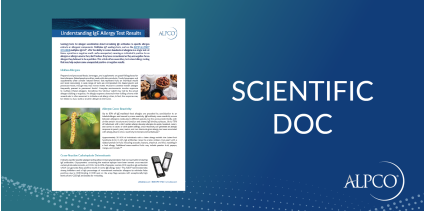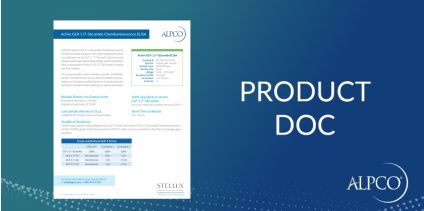Rat Thiostatin ELISA
$809.00
Catalog
41-THIRT-E01
Rat Thiostatin ELISA is for the quantitative determination of thiostatin in rat serum or plasma. Research Use Only. Not for Use in Diagnostic Procedures.
Species
Rat
Regulatory Status
Research Use Only. Not for Use in Diagnostic Procedures.
Product Distribution
Available Worldwide
Range
6.25 - 400 ng/mL
Sensitivity
6.25 ng/mL
Sizes
96 Wells
Sample Types
Serum
Inc Time Hour
2
Inc Time Minute
10
Inc Time Overnight
No
Inc Time See Protocol
No
Sample Size
5
Detection
Colorimetric
Thiostatin is a major protease inhibitor in serum and an acute phase protein that increases significantly in
concentration in the rat as a result of inflammation. The major pathophysiological role for rat thiostatin has yet to
be conclusively defined.
In this assay the thiostatin present in a sample reacts with the anti-thiostatin antibodies which have been adsorbed to the surface of polystyrene microplate wells. After the removal of unbound serum proteins by washing, anti-thiostatin antibodies conjugated with horseradish peroxidase (HRP) are added. These enzyme-labeled antibodies form complexes with the previously bound sample thiostatin. Following another washing step, the enzyme bound to the immunosorbent is assayed by the addition of a chromogenic substrate, 3,3’,5,5’-tetramethylbenzidine (TMB). The quantity of bound enzyme varies directly with the concentration of thiostatin in the sample tested; the absorbance at 450 nm is a measure of the concentration of thiostatin in the sample. The quantity of thiostatin in the sample can be interpolated from the standard curve constructed from the standards, and corrected for serum dilution.
In this assay the thiostatin present in a sample reacts with the anti-thiostatin antibodies which have been adsorbed to the surface of polystyrene microplate wells. After the removal of unbound serum proteins by washing, anti-thiostatin antibodies conjugated with horseradish peroxidase (HRP) are added. These enzyme-labeled antibodies form complexes with the previously bound sample thiostatin. Following another washing step, the enzyme bound to the immunosorbent is assayed by the addition of a chromogenic substrate, 3,3’,5,5’-tetramethylbenzidine (TMB). The quantity of bound enzyme varies directly with the concentration of thiostatin in the sample tested; the absorbance at 450 nm is a measure of the concentration of thiostatin in the sample. The quantity of thiostatin in the sample can be interpolated from the standard curve constructed from the standards, and corrected for serum dilution.







